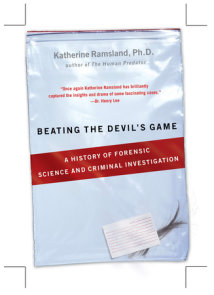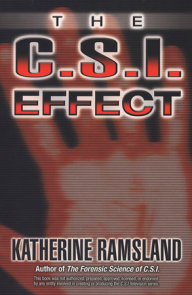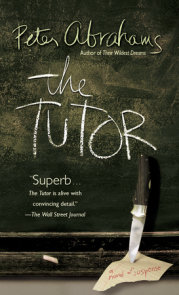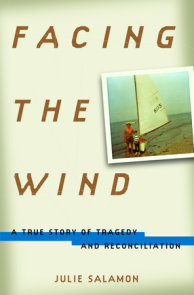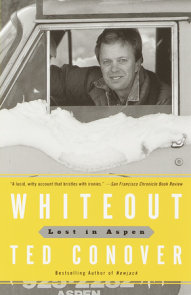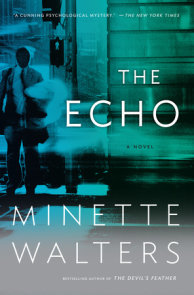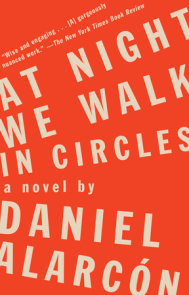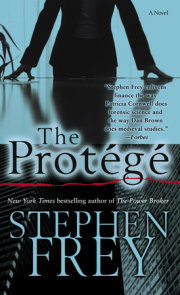READERS GUIDE
Questions and Topics for Discussion
INTRODUCTION
When introverted history teacher Samuel Szajkowski opens fire in a school assembly, killing four people before shooting himself, the police assume that they have an easy case—after all, there are plenty of eyewitnesses and the perpetrator was found dead at the scene. But Lucia May, a young female detective in an otherwise all-male police force, is convinced there is more to this tragedy than first appears. A Thousand Cuts, a gripping and taut debut novel from Simon Lelic, follows Lucia’s journey to understand Szajkowski and the events that drove him to commit such a shocking crime.
With her boss pressuring her to close the case, Lucia begins to explore Szajkowski’s past. Interviewing those who knew him, she begins to piece together the steps toward his mental breakdown and develops a nuanced—even compassionate—view of the teacher. Rather than a crackpot shooter, Szajkowski was a good man worn down by merciless bullying; from the sneering condescension of fellow faculty to the graphic and grotesque attacks by his students, Szajkowski endured petty cruelties daily. Lelic’s portrait of Szajkowski’s psychological suffering is skillfully drawn and disturbing in its authenticity, keen in its understanding of the desperate loneliness of being isolated and abused by one’s community. But Lucia is no stranger to intimidation, either; she struggles against the rampant sexism and harassment in her department, and even fights off a vicious attack by a colleague in an empty parking lot. Lucia is a determined, resilient heroine, one who is intellectually astute and emotionally complex, with a finely tuned moral sense that allows her to sympathize with Szajkowski without condoning his actions.
Blending a traditional narrative with multiple first-person perspectives, Lelic alternates between the details of Lucia’s investigation and interviews with eyewitnesses. Together, these strands present a multifaceted portrayal of cruelty, cowardice and guilt. The novel is riveting and profound, and it dissects a horrifying crime with lucidity and precision. Lelic challenges conventional responses to tragedy and, in Lucia, offers a heroine who finds her strength in discovering the vulnerability of another. A Thousand Cuts begins with a crime and ends with a question as Lelic examines the slow destruction of a man’s emotional well-being and asks whether his community, in pushing him toward violence, is responsible for his crime.
ABOUT SIMON LELIC
Simon Lelic has worked as a journalist in the UK and currently runs his own business in Brighton, England, where he lives with his wife and two sons. A Thousand Cuts is his debut novel.
A CONVERSATION WITH SIMON LELIC
Q. Your novel is an unconventional approach to analyzing a brutal crime; anyone committing an act of violence against children would seem to generate no sympathy at all. Why did you decide to write this story?
Some time before I started work on A Thousand Cuts, I came across a short news piece in the British press about a college professor in the United States who shot and killed one of his colleagues. The story was barely a paragraph long and contained few details but it started me thinking about what could possibly have driven an obviously intelligent and emotionally mature man to commit such a desperate act. The default response to such crimes seems to be to dismiss those who perpetrate them as psychopaths—as crazed individuals who, as you say, deserve no sympathy whatsoever. There is invariably a reluctance, too, to explore the issue of broader culpability. The great thing about fiction, for both writer and reader, is that you can venture into emotionally charged terrain and consider its scars from every angle. You can raise questions that might otherwise remain unasked and consider answers that might in normal circumstances be too painful to acknowledge.
Q. Were there any real-life situations that inspired you? Has your reaction to news reports of this type of crime changed since writing this novel?
There was the incident I mention above, as I say, but episodes, too, from my own time at school: teachers, for instance, being subject to victimization that was often more vicious than anything I witnessed in the playground. I recall teachers, on more than one occasion, fleeing the classroom in tears, and classes frequently became unteachable. Pupils were usually to blame but there was a sense as well that the staffroom had its own hierarchy and cliques—that the experience of teaching in a school could never be entirely distanced from that of being a pupil there. I went to a decent state-run comprehensive, I hasten to add. That it was a good school, though, in a way makes the events I witnessed even more worrying, even more suggestive that they were in no sense out of the ordinary.
With regard to my reaction to reports of the type of crime covered in the novel, there is no question that since writing the book such incidents feel significantly more real to me, more emotionally immediate. It is easy to become inured to what we read in the press—to a degree, from a perspective of being able to cope as human beings, this process is essential. But I no longer have the luxury of being able to turn to the next page in the newspaper when a report of this type presents itself—not, at least, until I have imbibed every word.
Q. Why did you decide to structure your novel as a blend of omniscient narration and first-person interviews? How did it affect your own understanding of the characters? What impact did you hope it would have on readers?
My intention was to take the reader on the same journey as Lucia, the detective lead character in the novel. Lucia has to decide what constitutes the truth as she is presented with various interpretations of it and I hoped it would be an engaging approach to ask of the reader the same thing. Equally, though, I felt the novel needed a strand told in the third-person in order to maintain a sense of flow. My hope was that Lucia’s character would act as a needle, drawing a thread through the narrative and, ultimately, stitching it together. I was tempted, at one point, to try and write the book entirely through first-person testimonies but in the end I decided there was a balance to be struck: between a story that maintains its momentum and a structure that encourages the reader to consider events from varying points of view.
Q. How did you choose the title A Thousand Cuts? What does the title refer to?
The title is a truncation of the phrase “death by a thousand cuts.” It is an analogy for the psychological effects of bullying. In the UK, the book is being published under a different title, Rupture, which is perhaps best explained by the dictionary definition of the noun: “an instance of breaking or bursting suddenly and completely.” I like both titles equally, though each came relatively late in the writing process—long after the book was completed, in fact. I had several working titles as I was writing the novel but I am far too embarrassed to tell you what these were!
Q. Bullying is a topic that people associate with children rather than adults; further, it is often assumed that to endure bullying builds character. Do you feel that bullying is a widespread phenomenon? Why are we so reluctant to intervene?
You are right, I think, that there is a sense in society that bullying is something all children have to endure, almost as a rite of passage. As an extension of this, there is also a perception that bullying among adults is not something to be taken seriously. I would take issue with both assumptions. It is easy to be dismissive of what, to someone not directly involved, might seem to be trivial, petty irritations: name-calling at school, for instance; casually sexist remarks, perhaps, in the workplace. But returning to the idea of death by a thousand cuts, it is often not the specific nature of the bullying that matters most, but more the sense of emotional isolation that bullying of any kind engenders among its victims. Bullying causes misery on a personal level and discord on a societal one. It is allowed to flourish because it is shadowy, elusive, because it is so hard to grapple with and contain. Also, because it is easier to place the onus on its victims to overcome their sense of shame and come forward than it is to intervene on their behalf. It is, in my mind, a question of moral courage.
Q. Of the many people involved in Szajkowski’s history, who do you see as most responsible for his breakdown?
This is a difficult question for me to answer because one of the central messages I tried to get across in the novel is that, as one character puts it, “there is plenty of blame to go around.” Also, as the novel unfolds, I think my opinion of who is most immediately responsible becomes evident. That said, it was never my intention to try to excuse Szajkowski’s actions. No one else in the story picks up the gun; no one else pulls the trigger. That he is guilty of murder is never in doubt, but it was a fascinating exercise to try to work out how culpable others were in nudging him closer to, or failing to stop him falling over, the edge.
Q. Lucia is a woman working in a man’s world, with all the difficulties that entails. As a man, was it challenging to write from an authentic and convincing female perspective, especially with regard to workplace prejudice and sexual harassment?
This was perhaps the most taxing aspect of writing the book. In terms of the thematic balance I set out to achieve, a female lead character seemed to me to be essential to the plot, so it was not a challenge I felt I could avoid. I could take nothing for granted when writing Lucia. The chief difficulty, really, was getting to know her, getting to know her. In this my wife, Sarah, as well as my agent, Caroline Wood, helped enormously. They raised questions about Lucia’s character that, without their input, I might well have failed to answer.
Q. Many of those who commit crimes on the same scale as Samuel Szajkowski often have stories of being bullied, ostracized or otherwise mistreated. To what degree do you believe that a community is complicit in the crimes that it inspires? Is it possible to punish a community for such behaviors or to somehow keep these actions from happening again?
To a greater or lesser degree, we are all complicit. But the punishment (if that is the right word) manifests itself in the crimes visited on our society: in the context of the book, for example, in the atrocities that Szajkowski and his like commit. The lives lost in school shootings are a horrendous and disproportionate price for society’s failings, for its oversights, for its inability to counteract prejudice and bigotry. Particularly when you consider that it is usually innocents who lose their lives—bystanders, effectively, caught in emotional, and literal, crossfire. Can we prevent such tragedies from recurring? Recent history suggests we are absolutely failing to do so. There is clearly no simple solution—these crimes and their causes are nebulous and multifaceted—but as a Brit, I find it difficult to look beyond, as a starting point, the issue of gun control. There is no question, after all, that such crimes occur with greater frequency in places where firearms are readily available. But I fully understand, too, that in the United States, for instance, this issue is far more complicated and emotionally charged than an outsider can perhaps appreciate. Each society must make its own choices and endure, if it can, the consequences.
Q. Were there any authors who inspired you while working on the novel? Which authors did you turn to when taking a break from writing?
I love Cormac McCarthy but I have to ban myself from reading (rereading!) his books until I am between drafts. I find his style so compelling, so consuming, that I subconsciously attempt to imitate it—and inevitably, needless to say, fail miserably. Other writers I particularly admire include Nabokov, Don DeLillo, Rupert Thomson, Hilary Mantel and John Fowles but I try to read as widely as possible. The problem, when I am caught up in writing, is trying to find the time.
Q. Did your background as a journalist influence the way you researched or wrote this book? In what ways is the process of writing fiction different from that of writing journalism?
My background in journalism certainly helped in terms of the discipline of writing. I am very used to sitting down at 9 a.m. and tapping keys until I have filled the page. I am also accustomed to editing myself as I write, which can sometimes save time on the redrafting later on. The biggest difference, I found, is the comparative freedom of expression that creative writing permits. Journalism, in any field, is often formulaic: the real work is getting the story, not transcribing it. Stories are written to a word count and can often quite easily be broken down into their constituent elements. There are also strict stylistic and grammatical parameters that can be hard to shake off once acquired. The lack of constraints in writing fiction is, naturally, extremely liberating, but also a challenge in itself for someone not used to such editorial freedom, because you find yourself imposing what are, after all, artificial constraints on style, grammar, structure and so on, when the best fiction, in my view, creates its own rules.
Q. As a first-time novelist, what did you find most difficult about writing this book? What was the most satisfying?
I was lucky in that my line of work gave me the time—and the financial freedom, more important—to write but from my own experience the biggest obstacle for a first-time novelist is lack of confidence. Or, rather, wavering confidence. Writing is a seesaw emotional experience but with only the hope rather than the expectation of publication, and without an agent or an editor or someone whose opinion, from a publishing-industry perspective, “counts,” it is easy to convince yourself, after a bad day at the keyboard, that you are wasting your time. That you don’t actually know what you are doing. That the encouragement your wife or your partner or the little voice in your head gives you is welcome and humbling but essentially misconceived, misguided, misplaced. And it takes an awful amount of good days to counteract the bad—to convince you to carry on and see through what you have started. I would never go as far as to claim that writing is hard (being a social worker is hard; being a full-time mother is hard) but it is certainly a leap of faith. As for the most satisfying part of being a novelist—first time or not, I am beginning to learn—it is every time you reach what seems a dead end and somehow find a way through. It is the morning after the sleepless night before.
Q. What are you currently working on?
I can tell you that I am working on something. I am actually beyond the first-draft stage of my next novel but, though I am not superstitious, some instinct or other impairs my ability to talk freely about it. I will say that it is quite different from A Thousand Cuts, both in terms of its structure and its themes. And it even has a title, which came, unlike A Thousand Cuts, before I had finished writing chapter one.
DISCUSSION QUESTIONS
- As the only woman in her department, Lucia May suffers a great deal of harassment and belittling. Is this treatment typical for women in male-dominated professions? Do men in female-dominated professions suffer from the same pressures? Why?
- “Why was the onus always on the weak when it was the strong who had the liberty to act? Why were the weak obliged to be so brave when the strong had license to behave like such cowards?” (p.189). What does Lelic mean? How is this demonstrated in the novel?
- Have you ever been the subject of bullying, as a child or as an adult? How did you respond? Have you ever bullied anyone else?
- What parallels exist between Szajkowski, Elliot and Lucia? How do their reactions to their situations differ?
- Do you feel any sympathy for Szajkowski? Why?
- Whether victims or perpetrators, many of the characters face situations in which they could have taken action against bullying, peer pressure or harassment. Identify three characters and explain how they could have handled their situations differently.
- What was your response to the book’s narrative structure? Which of the character interviews did you find most engrossing?
- Do you agree that because of their tolerance for bullying, the school community is partly responsible for Szajkowski’s actions? For Elliot’s actions? Is there a difference between the two?
- What was the most challenging aspect of this book for you? What do you believe is the book’s purpose? Was it successful?
- If this book was a film, who would you cast in the lead roles? How would you adapt the novel’s structure?
- Discuss your response to the closing scene of the book. Did it confirm or conflict with your expectations?










